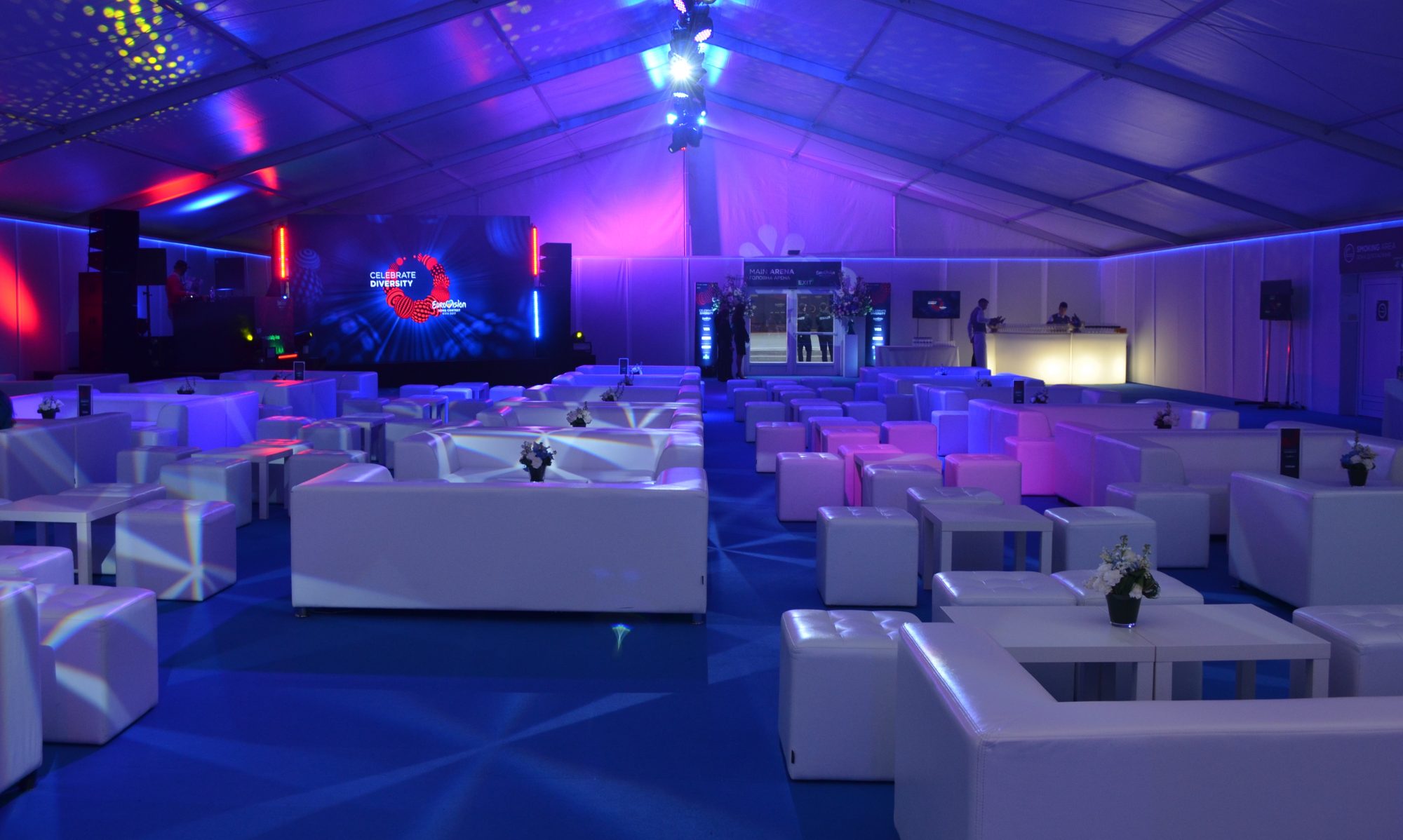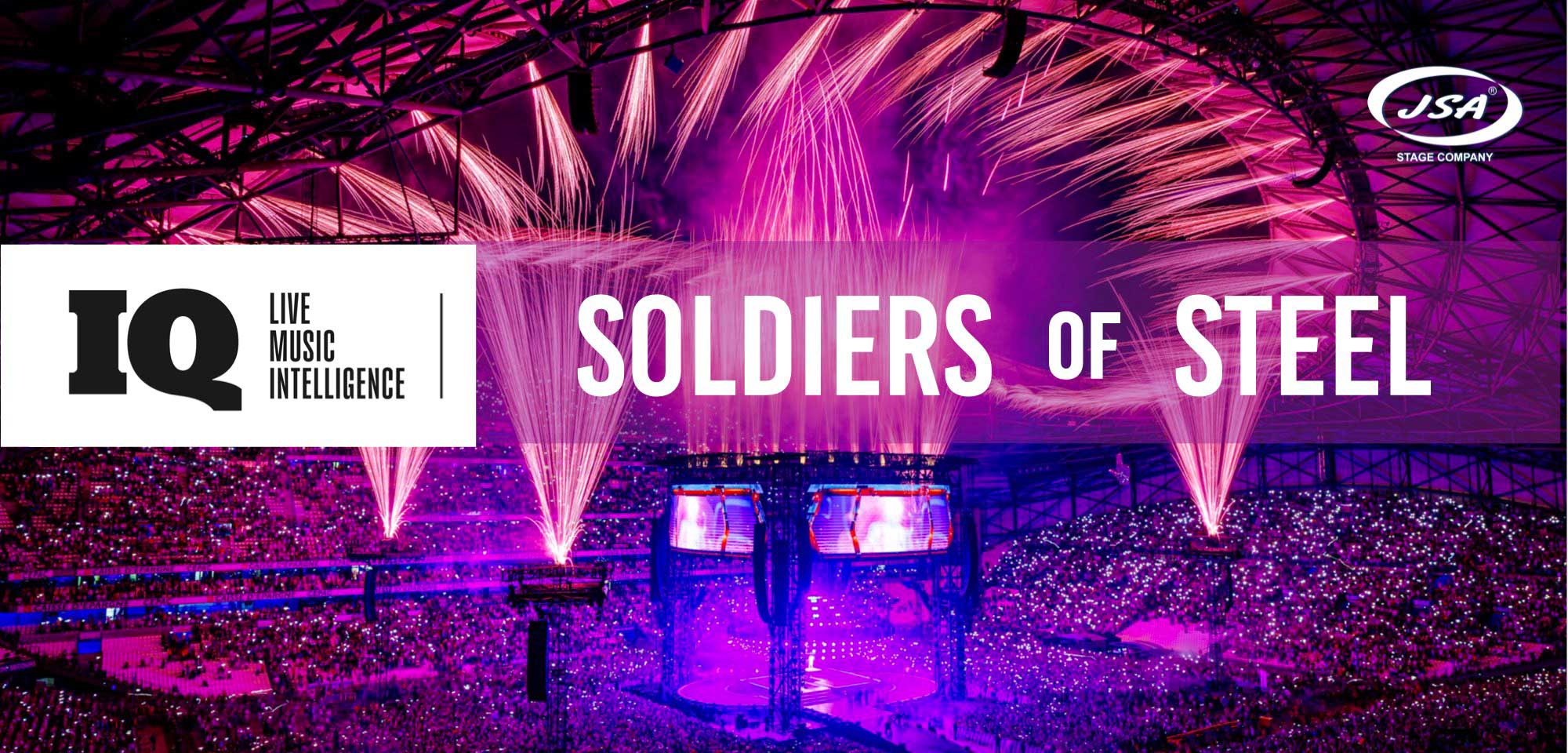How’s business in 2025 and how does it compare to previous years? (What can the increase/decrease be attributed to?)
Business for JSA in 2025 was generally about as busy as it had been in the previous few years. New orders arrived, some events were cancelled, and a couple of projects were postponed until next year. So, all is well, however it turned out we weren’t able to handle more work than our resources (crew and equipment) allowed. Nevertheless, as I see it, this season the industry has seen a growth in the number of projects and increased demand for temporary stage structures and other equipment.
There seems to be more stadium tours and outdoor shows than ever. Has this become a bigger part of your business?
Yes, the number of stadium concerts has increased. We’re seeing growth in our business in this segment. Changes in this area already occurred last year. In my opinion, this is due to the fact that more artists are touring at stadiums. This continues to be the case with established rock and pop stars, as well as new, young musicians. Modern technologies, the development of technical companies in our sector, and the modernization of stadium facilities make this possible for many performers.
Tell me about the most notable events you’ve staged in 2025?
There were several such projects.
An interesting event was in Turkey – a corporate festival on the grounds of a resort hotel in Antalya. The stage structures had to be installed on a beachfront site, which presented complex production logistics challenges.
We also provided an extensive event in Romania – installation of a big stage structure at a stadium in Craiova, for the IntenCity festival.
Our team also provided unusual and important work for Jennifer Lopez’s stadium concert in Yerevan.
And the most significant for JSA was the stage installation at a stadium in Chisinau for the concert of the famous German rock band Scorpions as part of their “Coming Home – 60 Years” anniversary tour. The stage design wasn’t complicated, but it had a significant context for us. JSA has a long history of staging for Scorpions, including the Mega Show on Red Square in Moscow in 2003.
How many different markets are your stages used in? Any new ones? Any high-growth markets?
Currently, JSA is not tied to any one country. Due to current circumstances, our business has become even more international in recent years. We provide staging for concerts, festivals and events in various countries: Romania, Moldova, Latvia, Estonia, Turkey, the Czech Republic, Poland, Germany and this year in Armenia. Next year, we already have plans for projects in Georgia and Hungary, and possibly Bulgaria, Austria, France, and possibly in other countries
As I see it, almost all markets are developing, with many players of varying levels. Therefore, our strategy is not to enter any specific market, but to take on interesting projects in any country, helping our clients solve their production challenges for specific situations. Typically, these are friendly, long-standing clients and new customers who begin working with us based on our reputation and perceive our unique, appealing approach to their projects.
I think that Georgia, Armenia, Azerbaijan, and Kazakhstan could become promising countries for the growth of live concerts in the near future, but much will depend on geopolitical processes.
What’s demand vs supply like in the staging sector?
As I indicated above, demand is growing, but supply is lagging a bit this moment. While equipment can be purchased fairly easily and quickly, training and building professional teams to work on-site is a challenge. Recruiting people is possible, but that’s only part of the story. In our business, the following are essential: specialized work skills, teamwork, a logistical mindset, adaptability to working conditions, resilience to physical stress, and so on. The process of training and building a reliable crew takes time. We have such a team and can operate in a variety of situations. This is why JSA has been able to find its niche in the marketplace, regardless of country or city.
What are the costs like this year? In which areas are you seeing a spike in prices?
The biggest challenge remains the increased cost of transporting equipment over long distances. Hotel accommodations have become more expensive, but otherwise prices remain within normal limits.
How much has the war between Russia and Ukraine impacted the supply/transportation/cost of steel?
Russia’s tragic war in Ukraine had a significant impact on us from the very beginning. JSA had to lose the market, make many changes, adapt to new conditions, find a new identity, and rebuild its business processes.
In terms of specifics, the war certainly impacted fuel prices, and transportation costs increased accordingly, as I mentioned above. Equipment purchase costs are currently affordable; prices rose during the first year of the war, but have not increased since. Overhead costs are gradually increasing, but for now, everything is within reasonable limits.
What are the kinds of technical challenges that crop up in 2025?
I don’t see it at the moment. I don’t think there will be any problems in that regard. There will simply be a shortage of materials and personnel, as usual. But this is a recurring theme every year…
Artist production riders are getting more complicated. What does this mean for the staging sector?
Yes, indeed, some artists and projects are seeing riders become more complex, while others remain within standard requirements. Roof load-bearing requirements for roofs and towers are increasing, engineering is becoming more complex. And sometimes you just need more metal and various equipment to bring the stage design to life. This is great and encouraging—the market is developing. Staging is becoming more interesting and this is a cool professional challenge. My opinion is that every company will handle this as best they can, within the limits of their desires, goals and capabilities.
What’s the more ambitious staging you’ve worked on this year?
The most ambitious project, unfortunately, was not realized. It was to install a temporary pavilion for VIP guests of the Eurovision Song Contest in Switzerland. We participated in the tender and did a great deal of work on this project. JSA proposed installing a unique two-story pavilion (FLEXODROME-type) in a small space to accommodate all the guests. This attracted the interest and approval of the organizers. However, another contractor was ultimately selected, who offered not only the structure but also a full range of services, including full technical support and decoration. Of course, we were upset, since we learned of the new terms at the last minute and couldn’t quickly make our offer.
Tell me about some of your newest staging innovations.
In recent years, we’ve been actively developing and promoting our FLEXODROME project – a Temporary Multifunctional Structural Space for Events (for: concerts, theater, dancing, club, sports, exhibitions, and much more). JSA has experience installing prototypes of similar structures in the past. We installed our first temporary concert hall back in 2005 for the MTV Awards ceremony.
Unfortunately, due to the impact of sanctions, one such project was cancelled in 2024 / Temporary building for a concert club in Almaty.
Among simple technical innovations, we have been actively using Layher TwixBeam elements in staging for the last three years, but this is only of interest to a small circle of professionals in our sector.
What are some of the common hiccups when bringing the staging design to life?
Typically, difficulties are primarily related to timing. When an idea comes to the client (designer, director, artist, promoter) shortly before the show starts. In other cases – technology, experience, skills, and connections with manufacturers and workshops allow us to bring to life the wildest fantasies for shows and events.
And of course, an important aspect is the load-bearing capabilities of the roof structures available in specific cases.
Do you have enough staff? Are they trained and educated? Or are you still seeing the effects of the brain drain from Covid?
We’re currently coping with this task. The effects of COVID-19 are still occasionally noticeable in our business, but overall, everything has returned to normal. However, there will always be a shortage of professional staff if you’re focused on business growth and ambitious enough.
What are health and safety requirements like in 2025? Are you having to invest more in new equipment or inspections to keep up with demand and safety requirements?
Yes, of course, this is an inevitable part of any business. But, when it comes to equipment, there’s another option: renting it from other companies. As it turns out, there are companies that have a lot of equipment, but they don’t know how to take on projects. But when it comes to personnel, it’s better to have a core team of reliable and proven people.
Stability and complacency are rare in our business. New challenges require action and our response to them.
And production safety always remains a priority.
How is the sector and JSA in particular embracing sustainability?
As recent years have shown, the modern world order itself is unstable, and yet, the development of our life is constantly occurring. Frankly, JSA is currently going through challenging times, and we’re facing certain difficulties, but I remain optimistic about what lies ahead. My team and I still have much to do to ensure sustainable and successful development and to celebrate the company’s 30th anniversary next year with dignity.
This interview was conducted via email in a question-and-answer format to prepare material for a review article about the stage business, “Soldiers of Steel,” in the October issue of IQ Magazine (No. 139).


